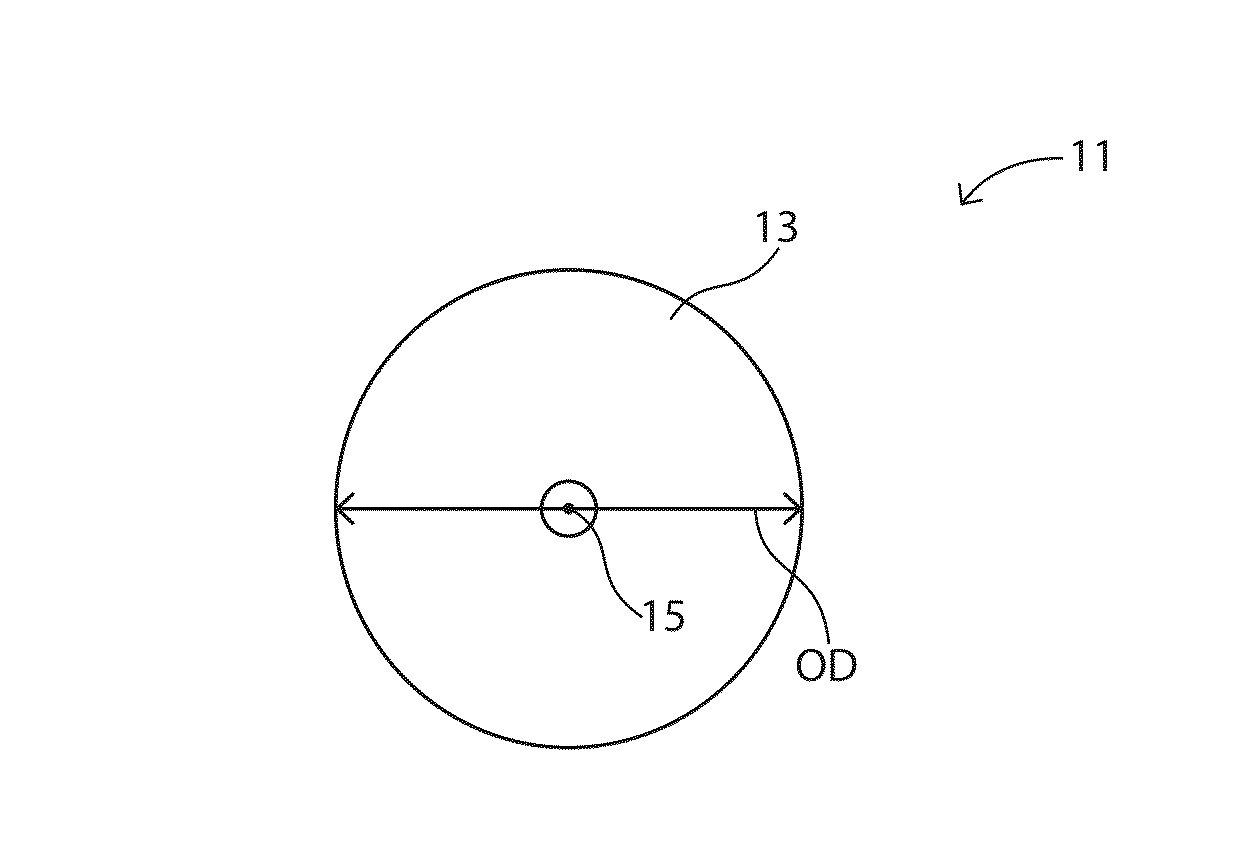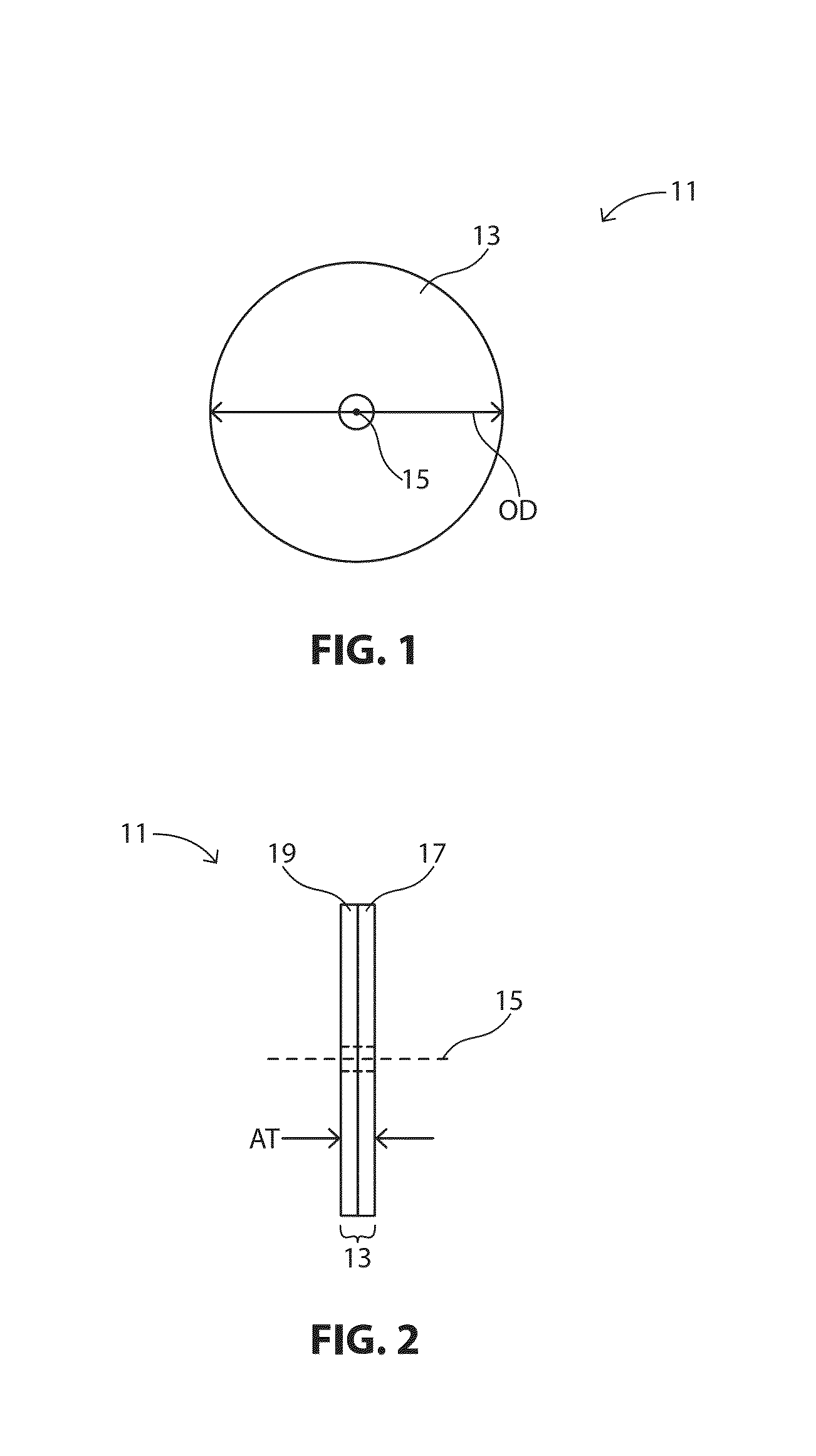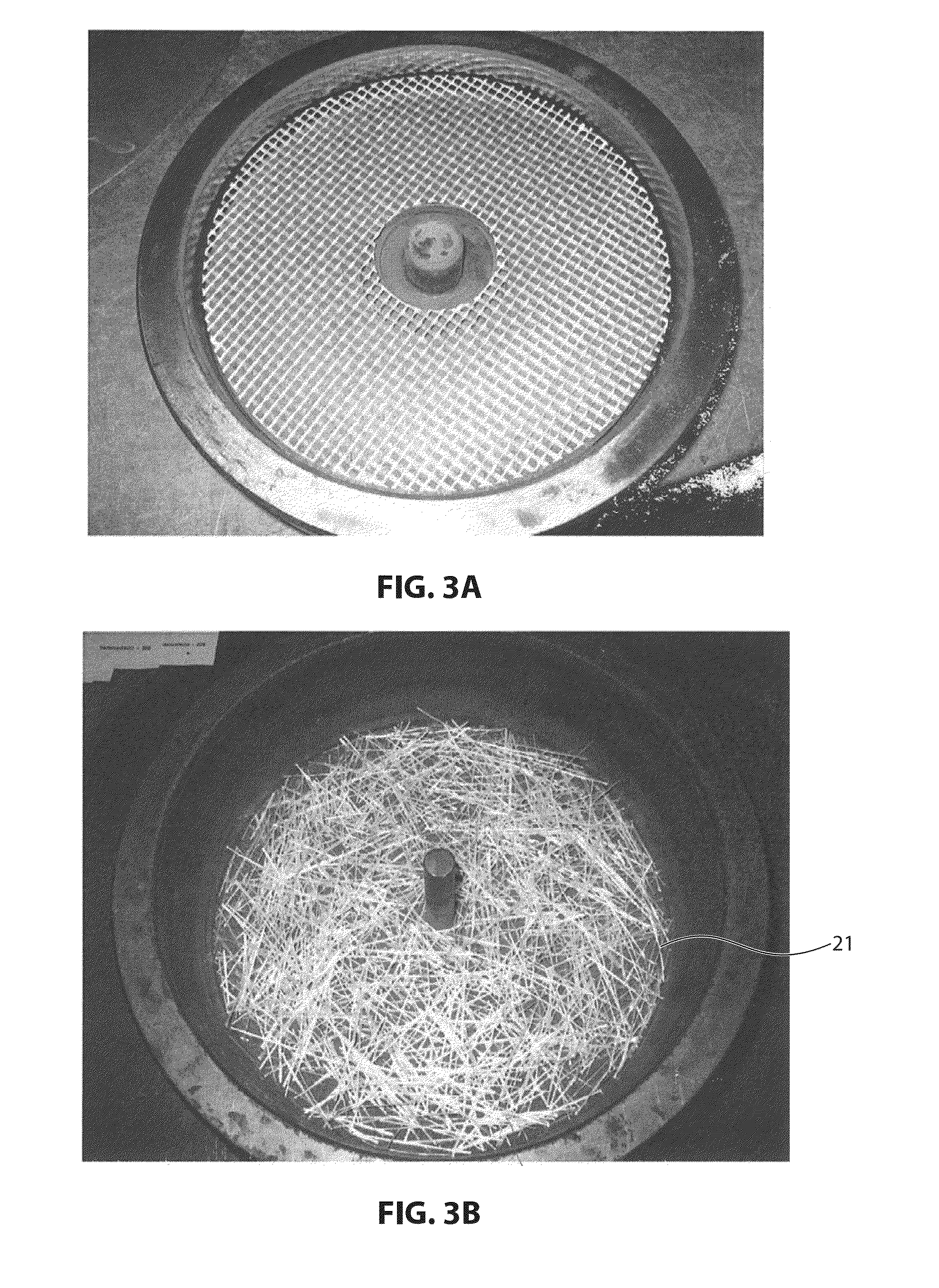Abrasive article
- Summary
- Abstract
- Description
- Claims
- Application Information
AI Technical Summary
Benefits of technology
Problems solved by technology
Method used
Image
Examples
example 1
[0542]Each sample of the abrasive composite wheel compositions comprised 57 vol % bond and 38-40 vol % abrasive. In addition, a small amount of furfural (about 1 vol %) or less was used to wet the abrasive particles. The bonds were blended with the furfural-wetted abrasive followed by addition of the reinforcements with only minimal mixing thereafter. The compositions were allowed to age for at least 2 hours before molding. Each mixture was pre-weighed then transferred into a 203 mm diameter mold, spread and then hot pressed at 160° C. for 45 minutes under 352 kg / cm2. The wheels were removed from the mold and additionally cured at 200° C. for 18 hours. Flexural specimens having the correct dimensions according to ASTM procedure D790-03 were cut from the wheel and tested in a three point bend with a 5:1 span to depth ratio. Additional specimens having the same dimensions and having a notch across the specimen width were tested according to procedure described above. The formulations ...
example 2
[0548]In another experiment, various types of CSF sample wheels were prepared in accordance with Table 2A. Some of the samples were coated, while others were not. These samples did not contain conventional web reinforcements. The samples otherwise were prepared in an identical manner as described in Example 1. As described in Table 2A, the samples in FIG. 9 contained various volumes and sizes, and some included thermoplastic (polyurethane) coatings. Each sample had an LOI of about 15 wt % to about 25 wt %.
TABLE 2AComponent0710020107100202 071002037110601711060271106037110604Extruded alumina55.6855.6855.6855.6855.6855.6855.6820 gritDurez 2972218.3718.3718.3718.3718.3718.3718.37Saran0.000.000.000.000.000.000.00PKHP-2000.970.970.970.970.970.970.97Pyrite10.1010.1010.1010.1010.1010.1010.10Potassium sulfate 4.194.194.194.194.194.194.19Lime2.522.522.522.522.522.522.52SiC-8000.000.000.000.000.000.000.00Fused brown2.172.172.170.000.000.000.00aluminum oxide220 gritMineral Wool3.000.000.002.17...
example 3
[0550]As described in Table 2B, additional samples were prepared to compare wheels with conventional reinforcement webs (samples 711605) to wheels with coated chopped strands or CCS (samples 711606) in a mat or layer. The samples were otherwise identical to each other, and prepared in the same manner as Example 2. During fabrication, one half of the mix was transferred to the mold, spread evenly and the web or the 2″ coated yarn was placed / deposited as a mat. The remaining mix was transferred on top of the reinforcement and pressed as described for Example 1.
TABLE 2BComponent71106057110606Extruded and sintered aluminum55.6855.68oxide 20 grit (vol %)Durez 29722 (vol %)18.3718.37Saran (vol %)0.000.00PKHP-200 (vol %)0.970.97Pyrite (vol %)10.1010.10Potassium sulfate (vol %)4.194.19Lime (vol %)2.522.52SiC-800 (vol %)0.000.00Fused brown aluminum oxide0.000.00220 grit (vol %)Mineral wool -PMF (vol %)2.172.174 mm OCF-497 (vol %)6.006.00IPAC Style 24 glass web (g / wheel))20.4050 mm CCS(grams / ...
PUM
 Login to View More
Login to View More Abstract
Description
Claims
Application Information
 Login to View More
Login to View More - R&D
- Intellectual Property
- Life Sciences
- Materials
- Tech Scout
- Unparalleled Data Quality
- Higher Quality Content
- 60% Fewer Hallucinations
Browse by: Latest US Patents, China's latest patents, Technical Efficacy Thesaurus, Application Domain, Technology Topic, Popular Technical Reports.
© 2025 PatSnap. All rights reserved.Legal|Privacy policy|Modern Slavery Act Transparency Statement|Sitemap|About US| Contact US: help@patsnap.com



